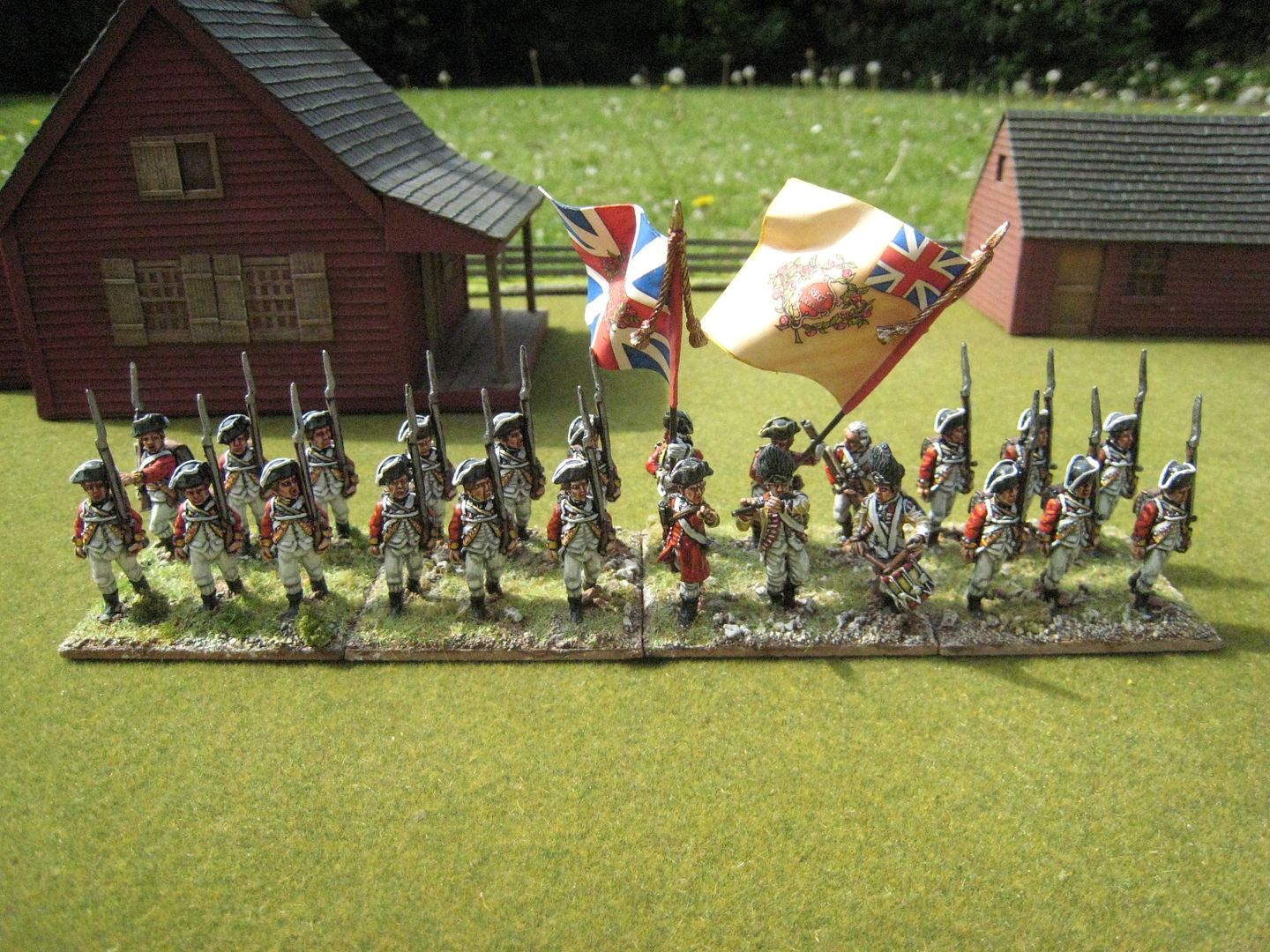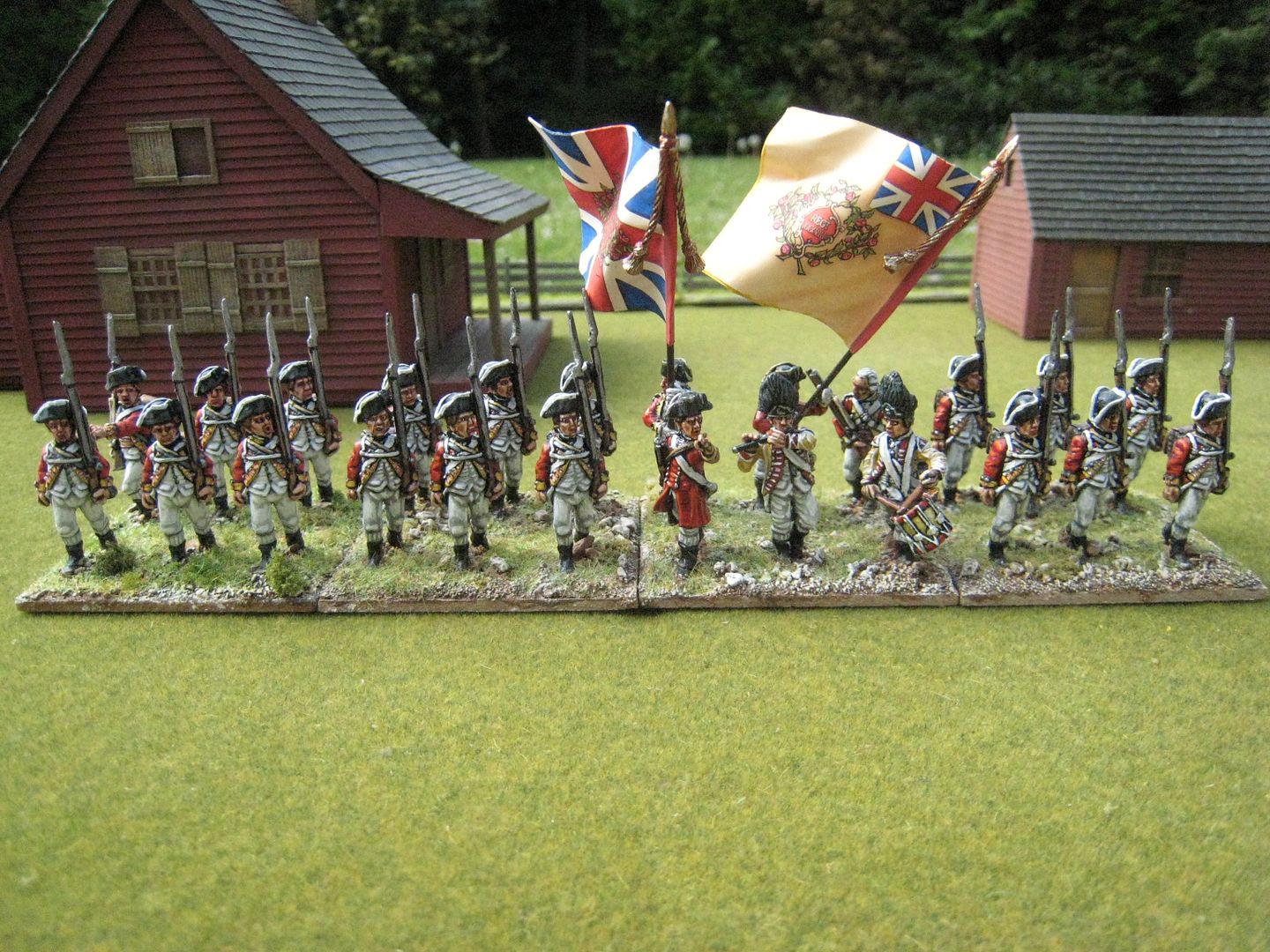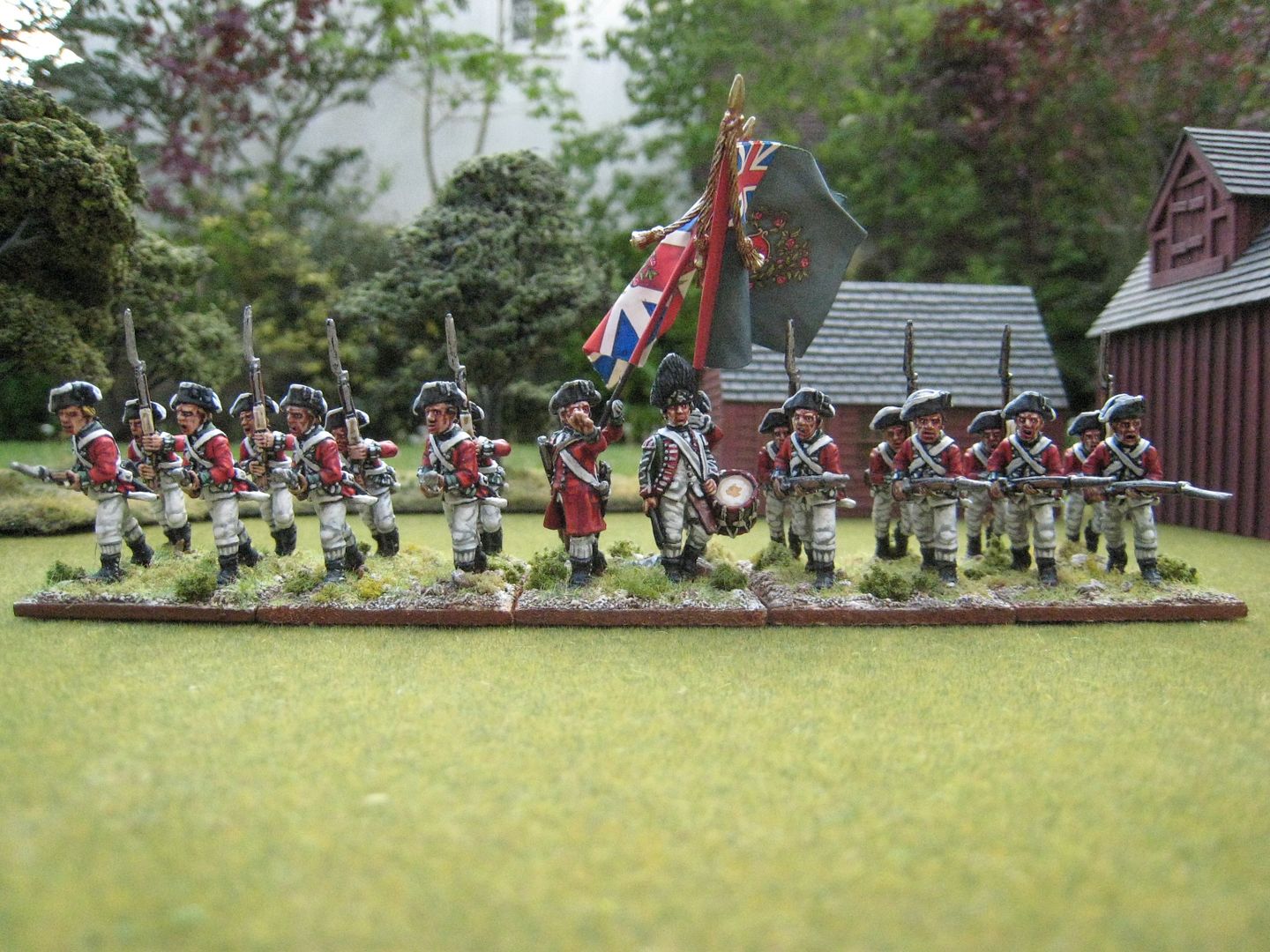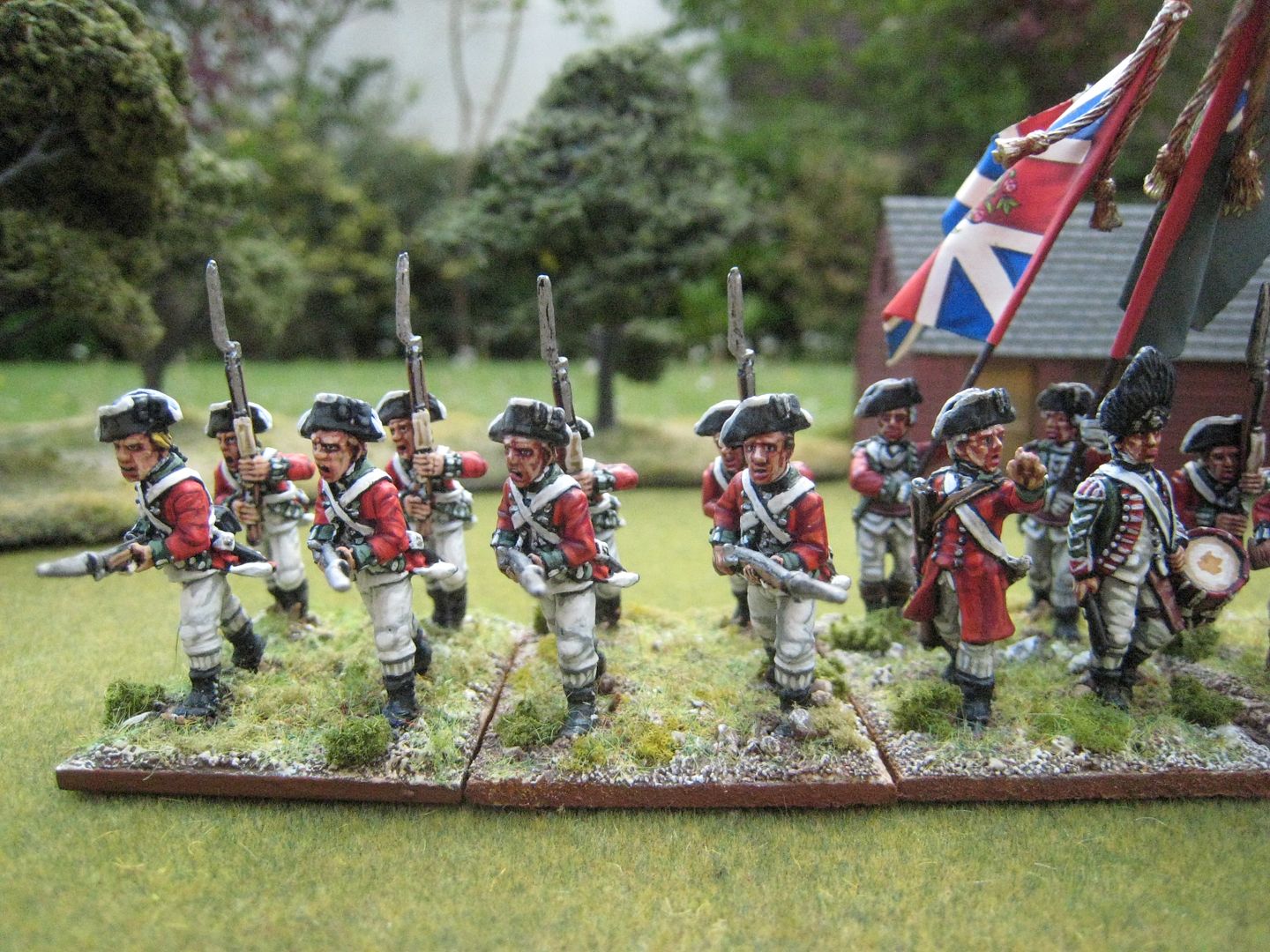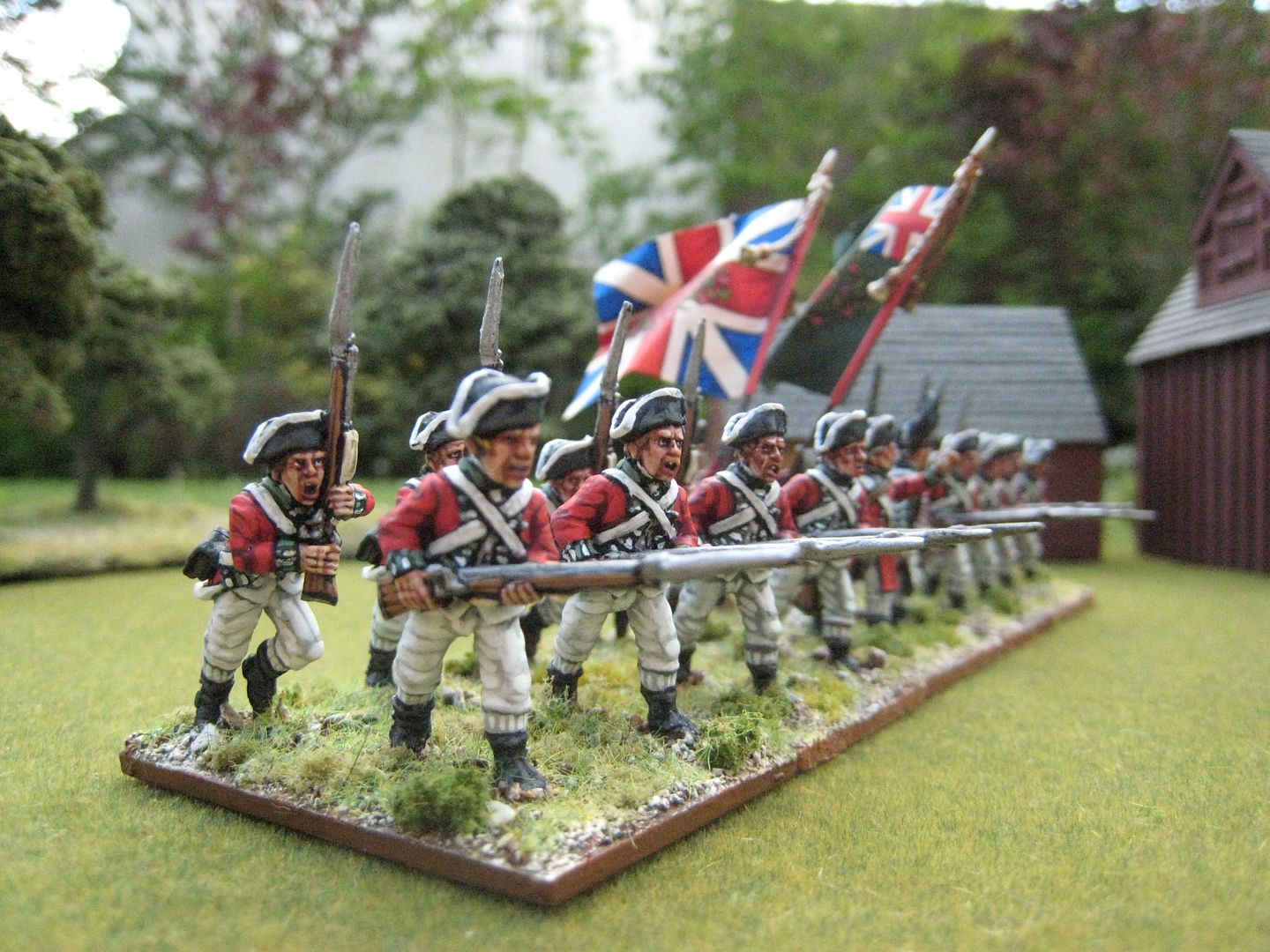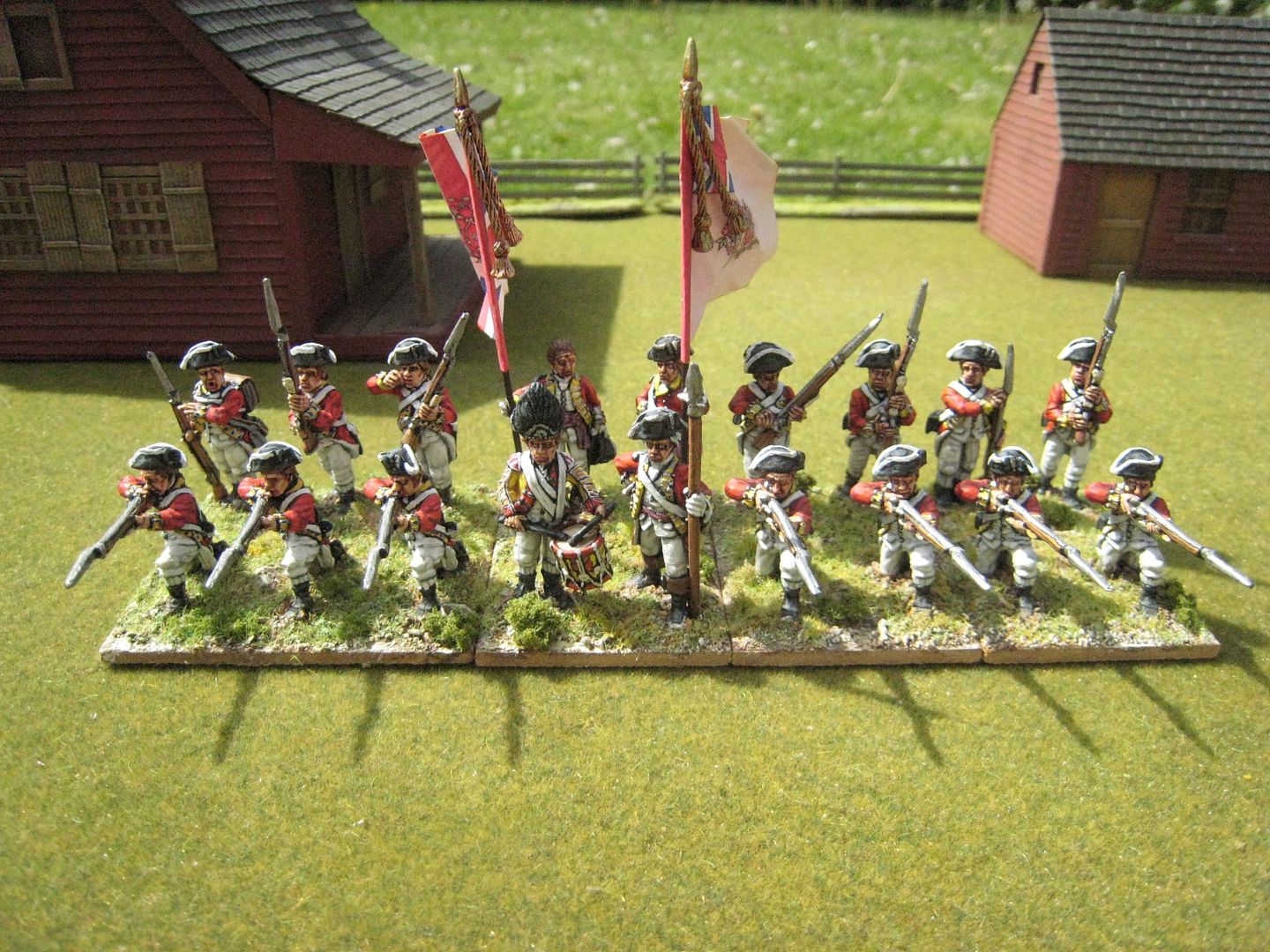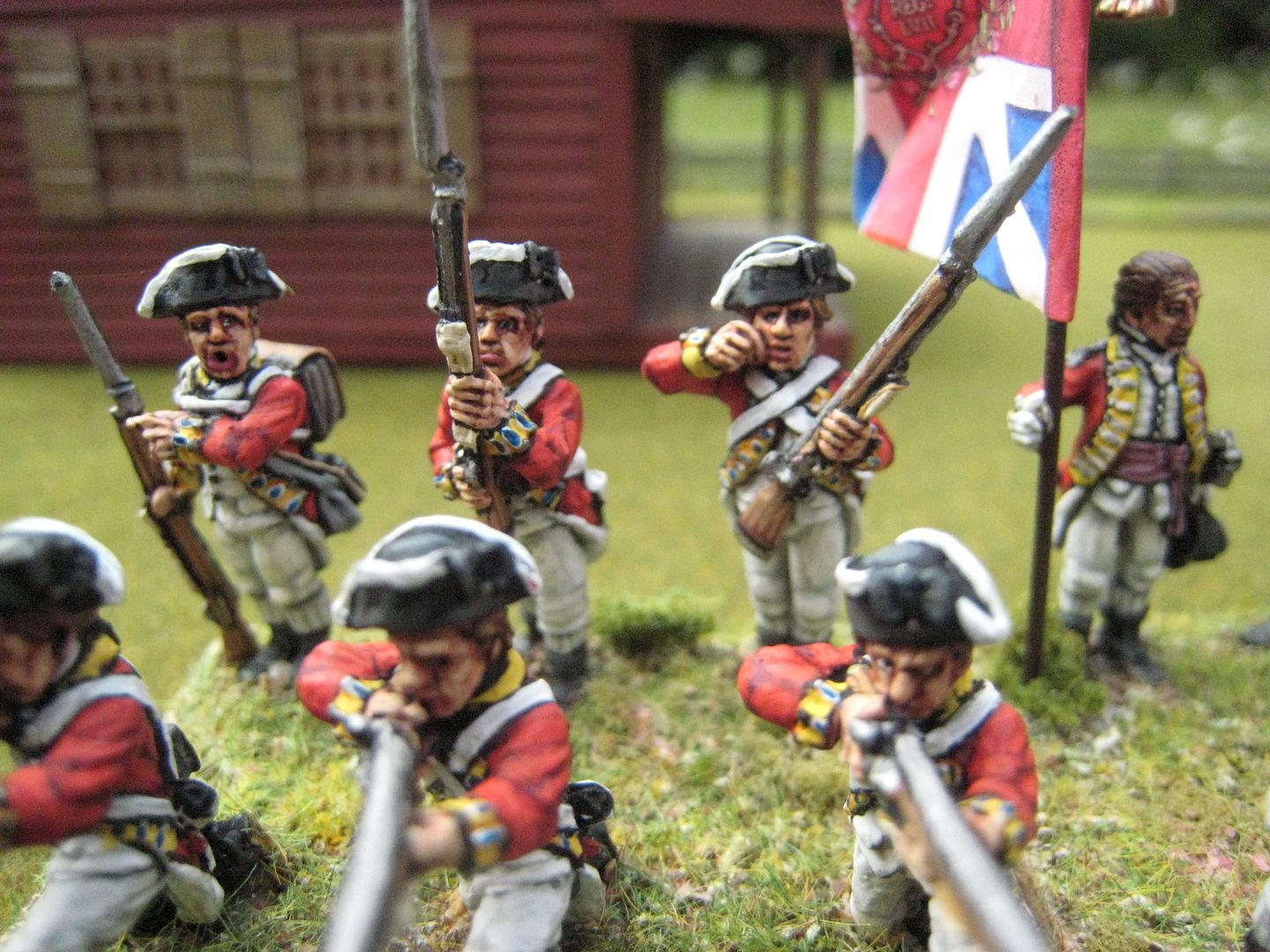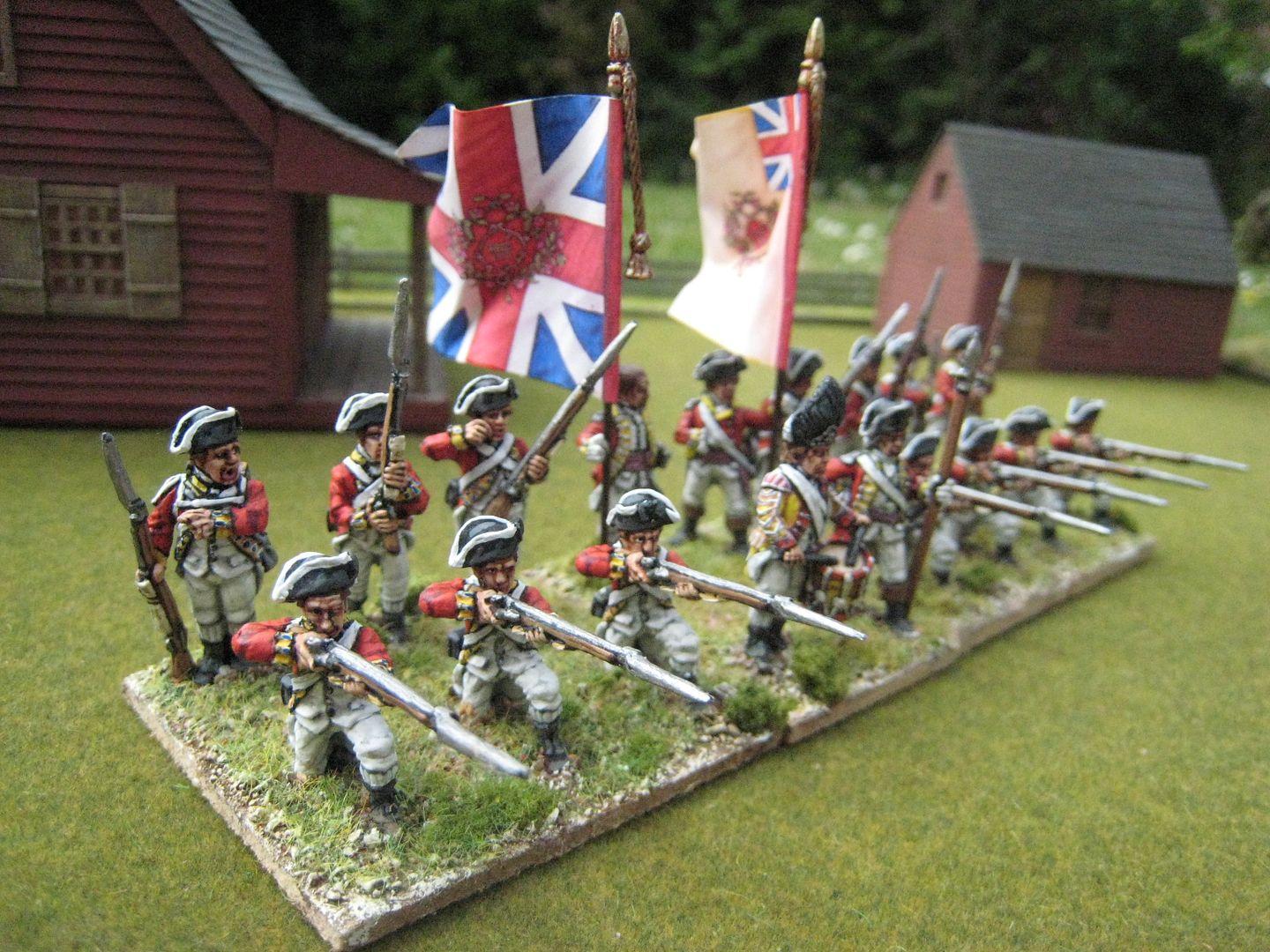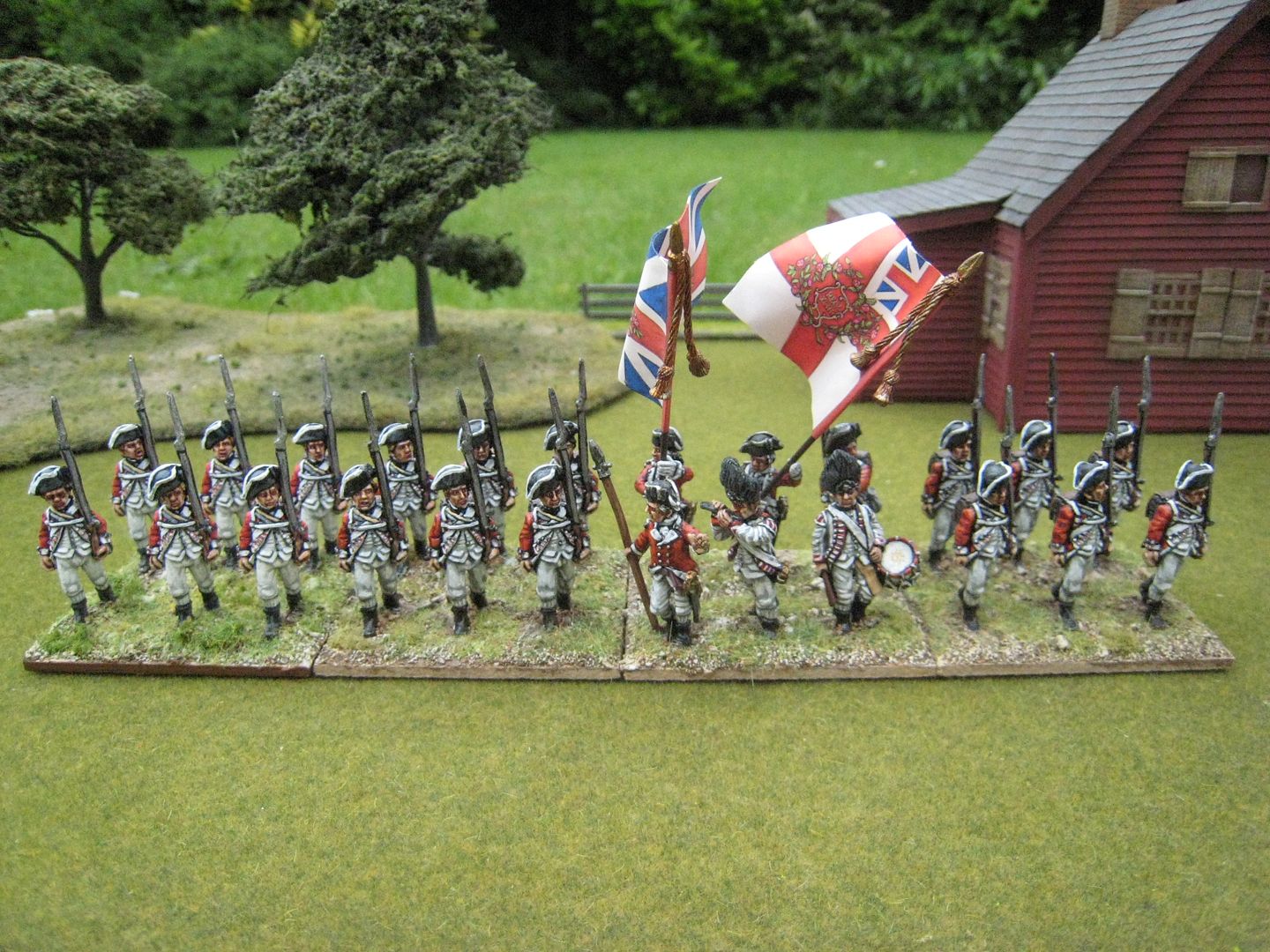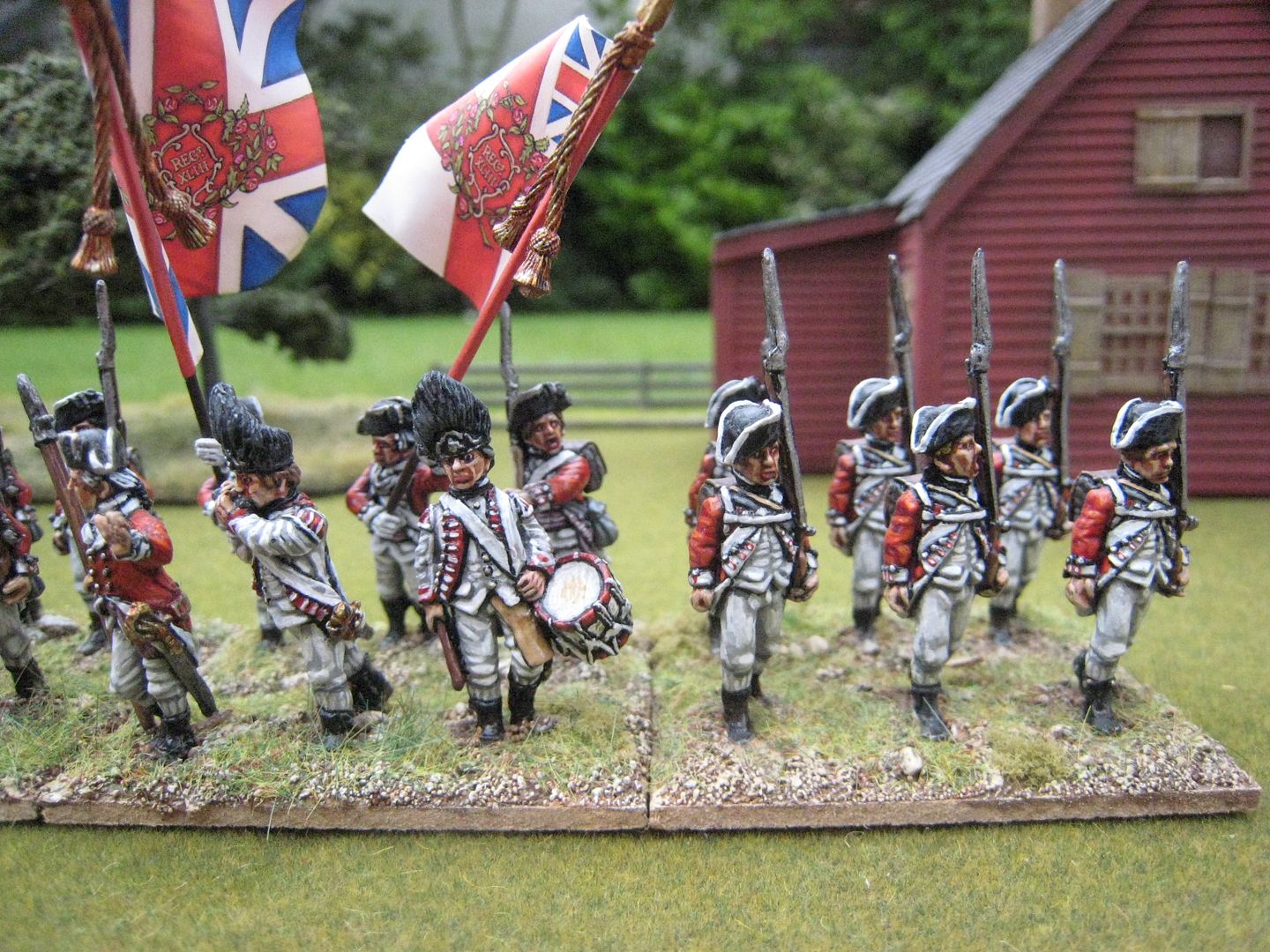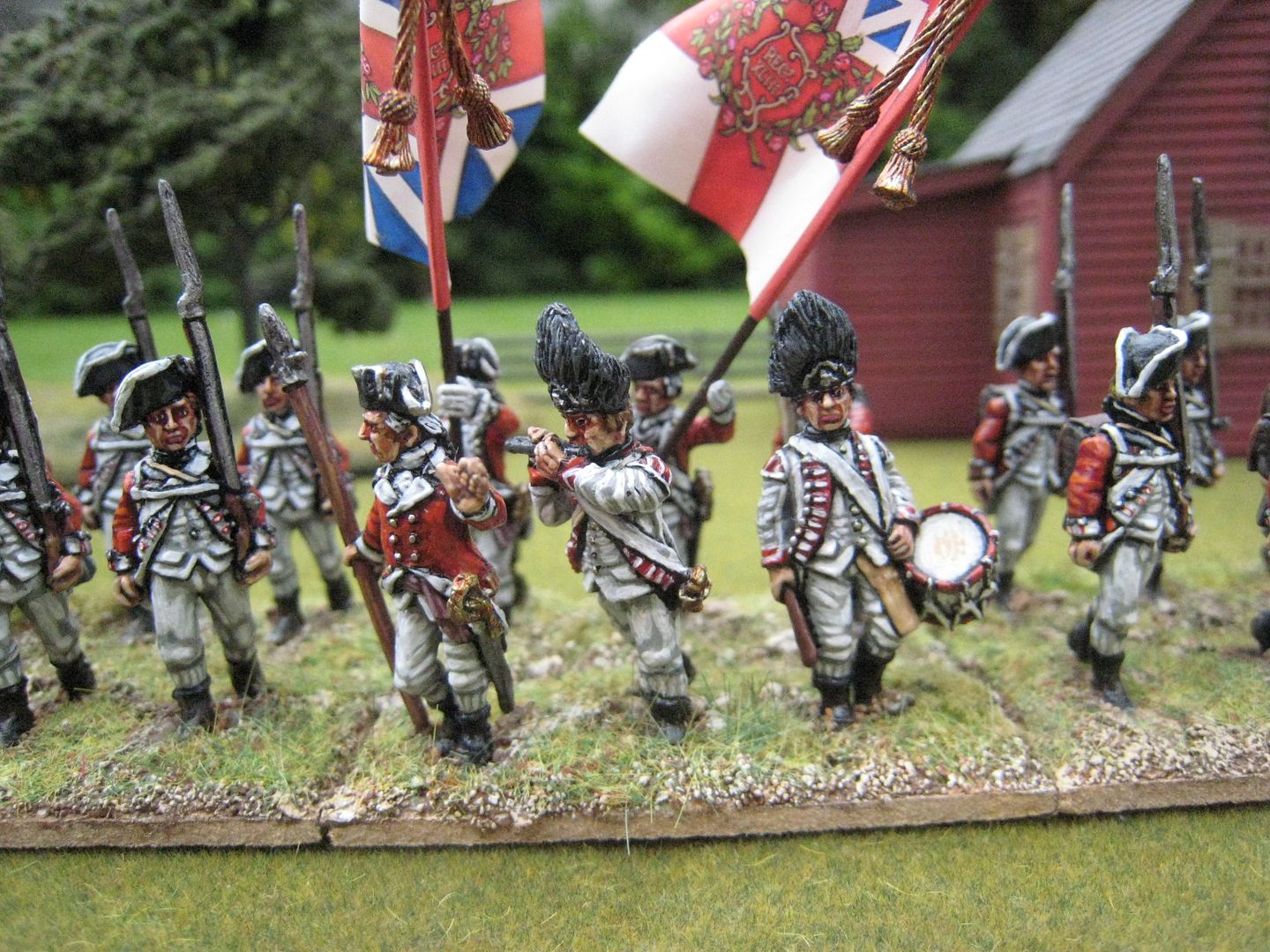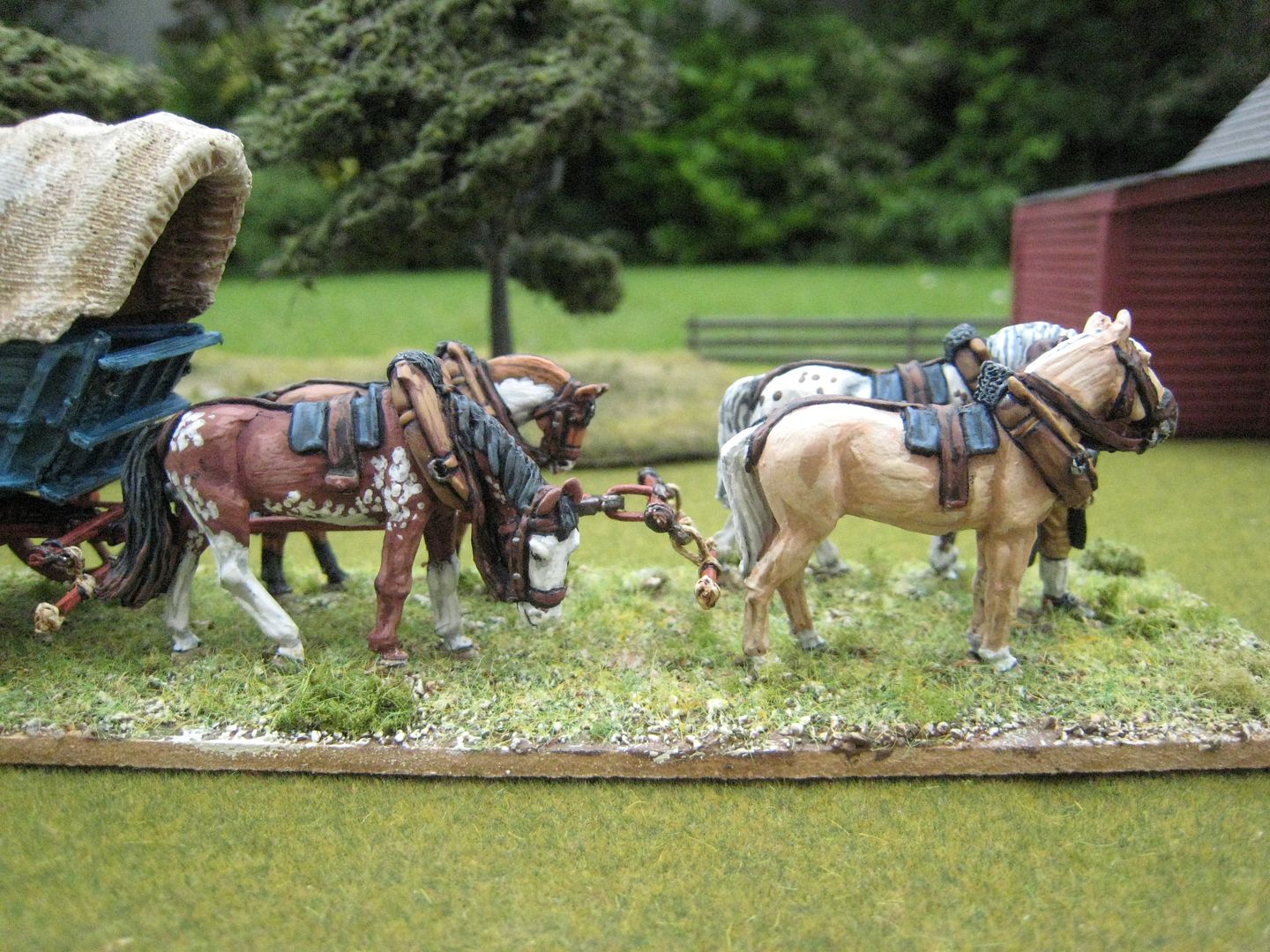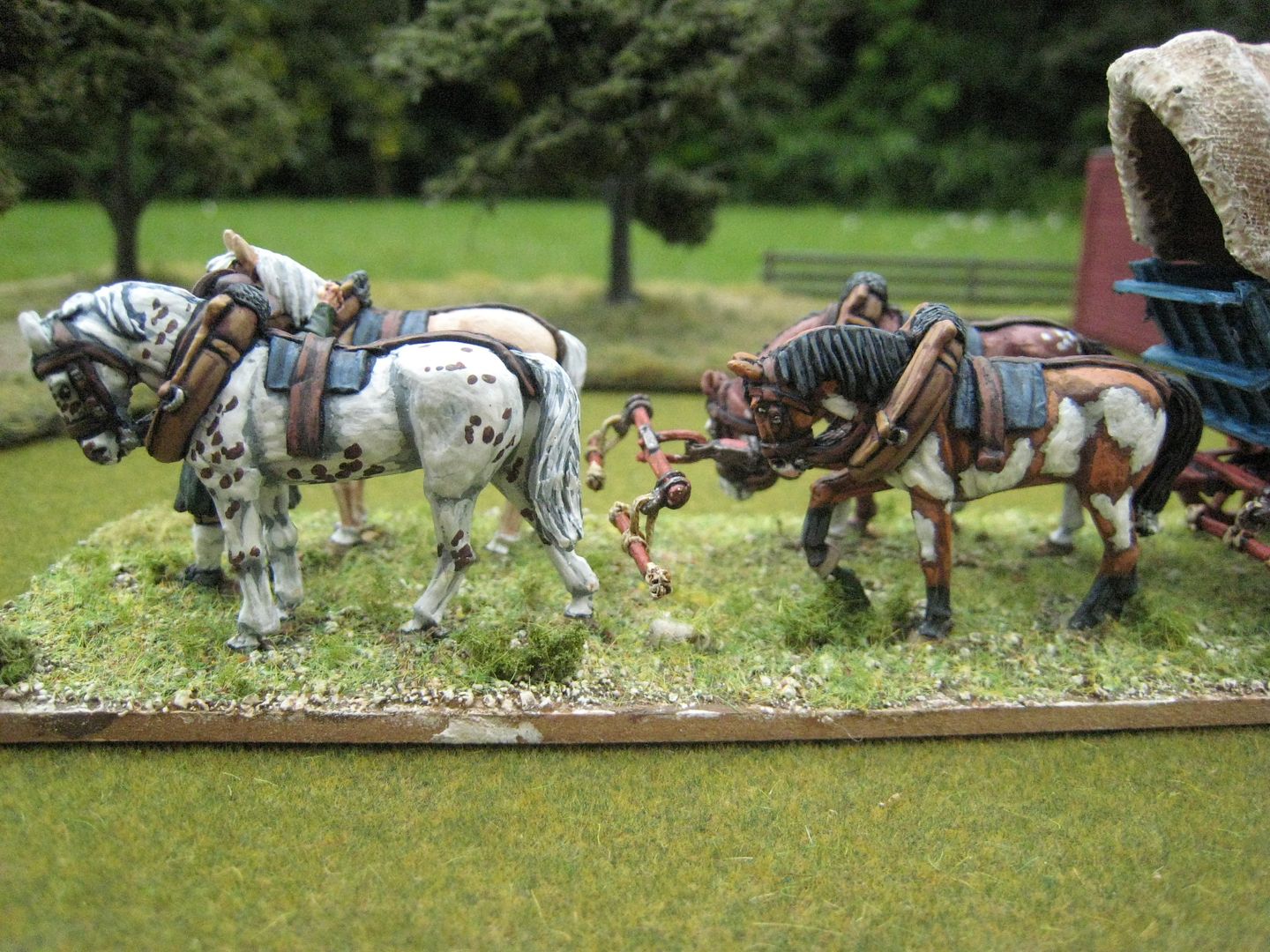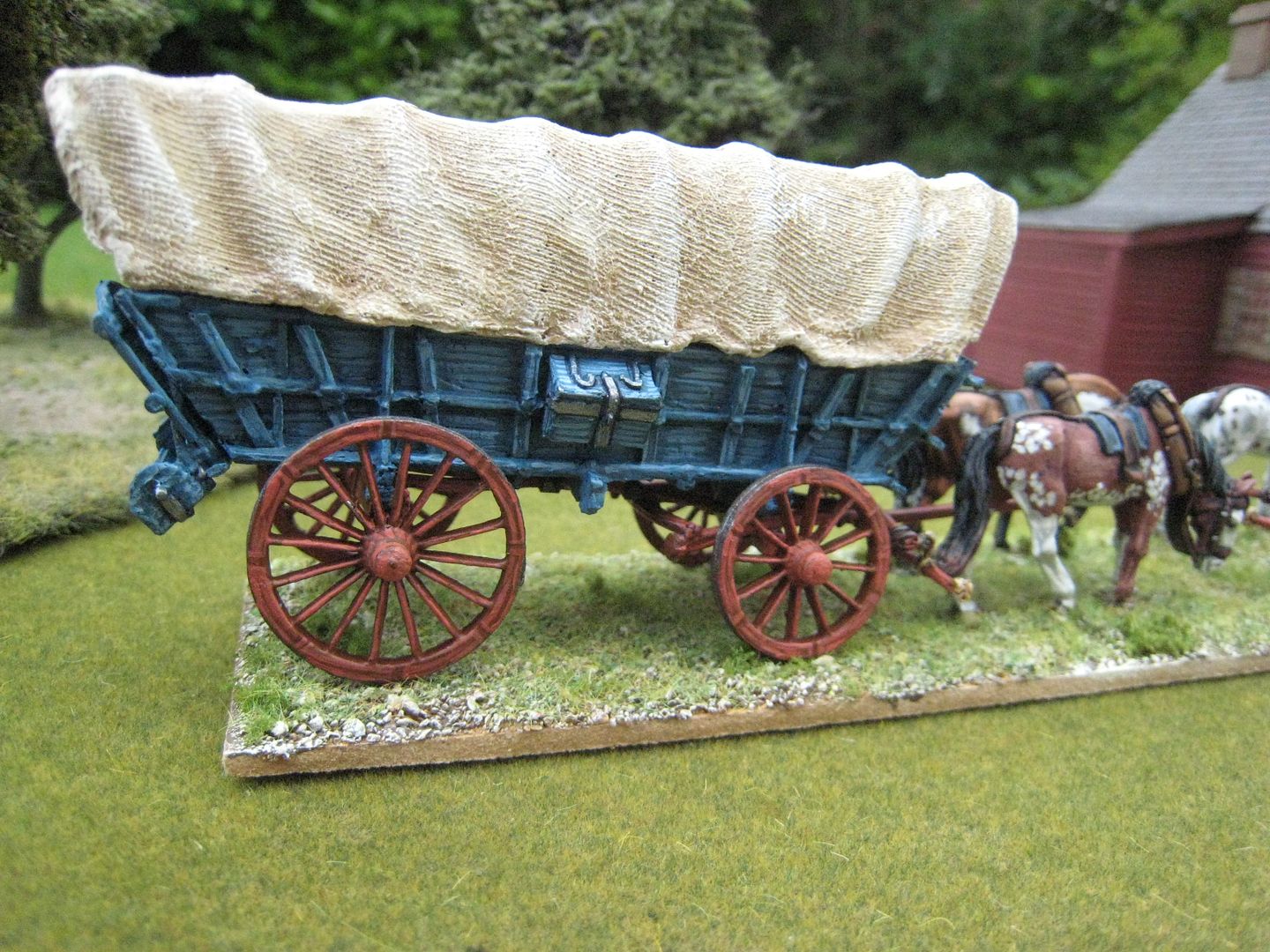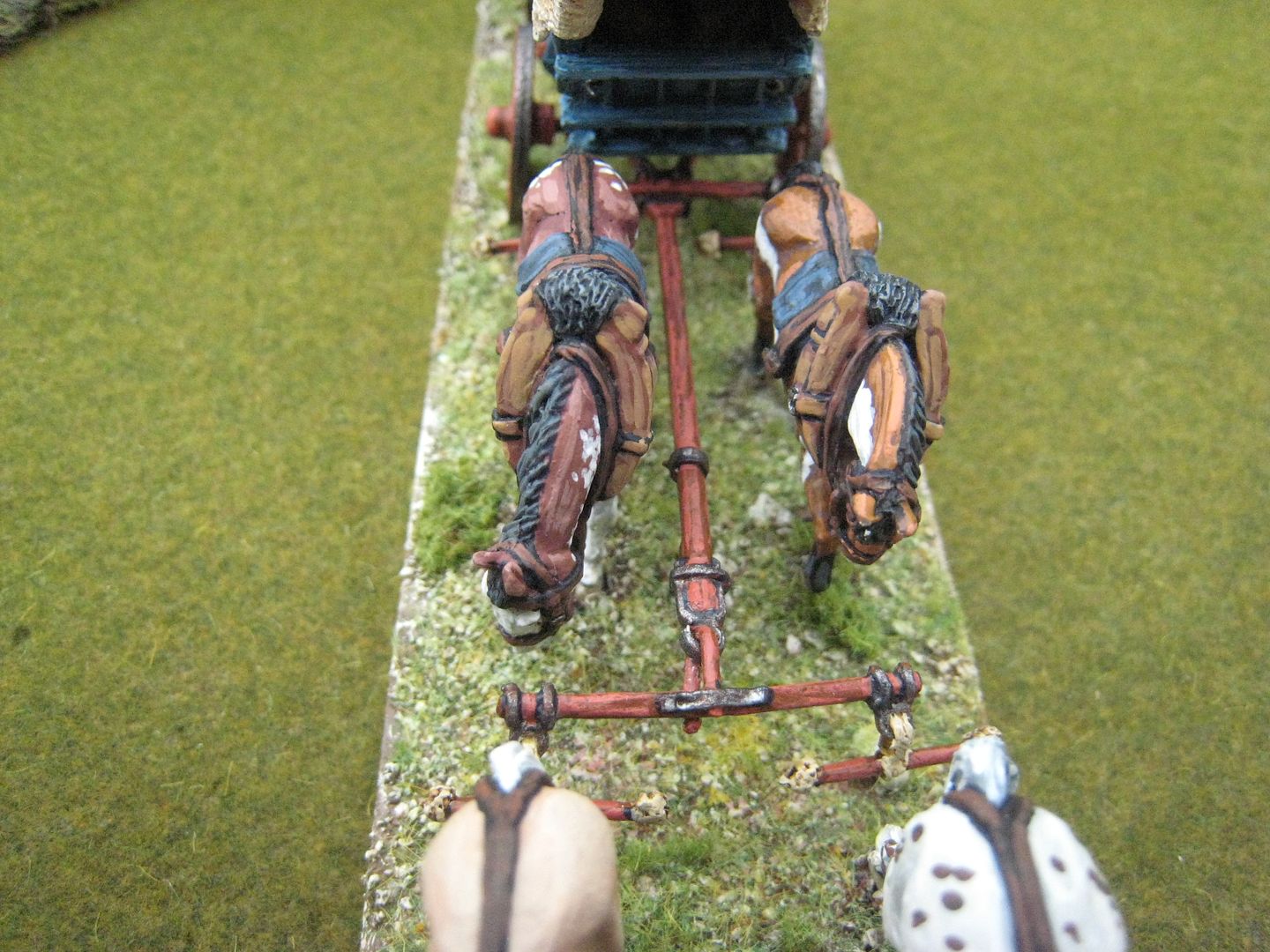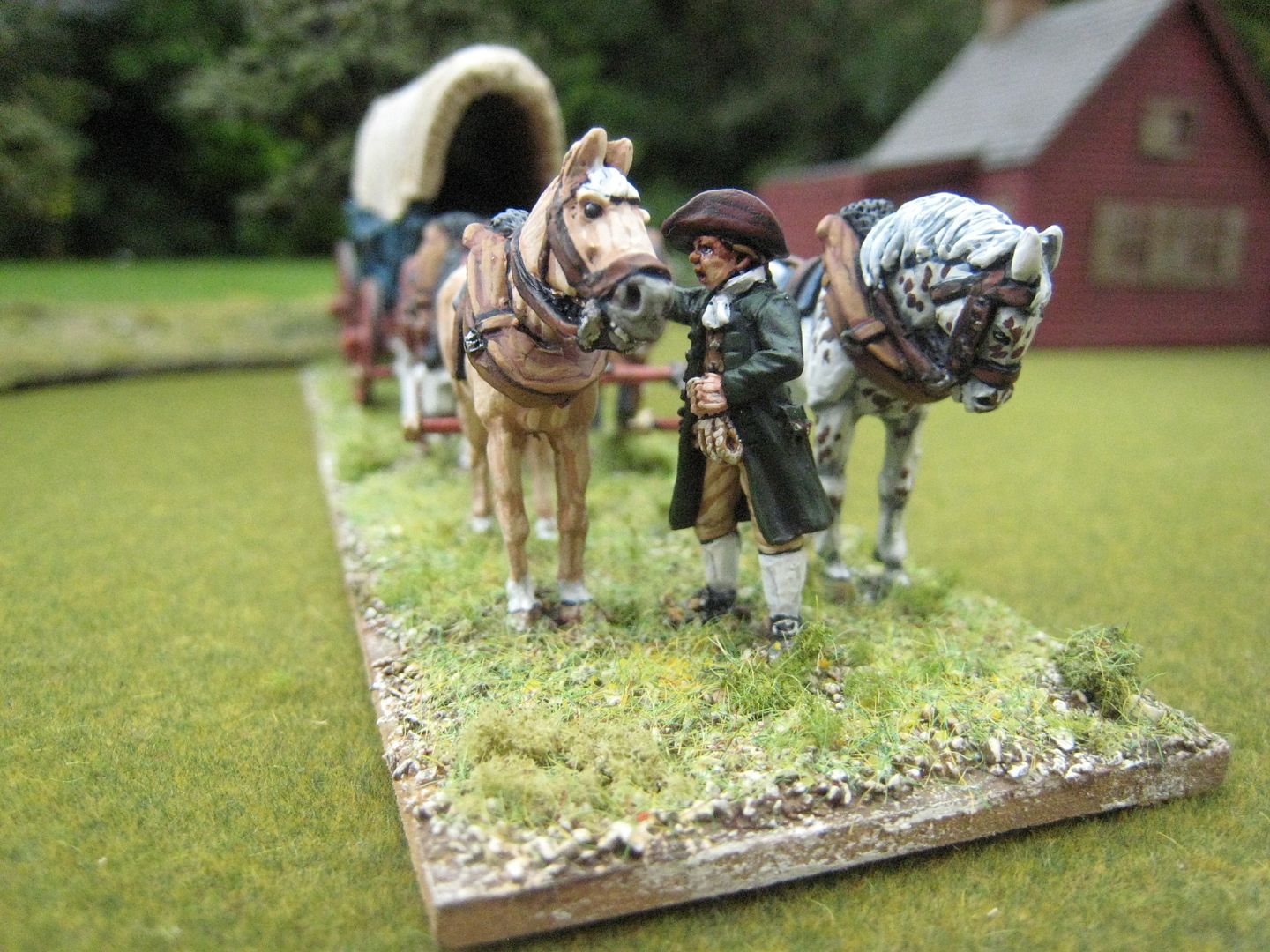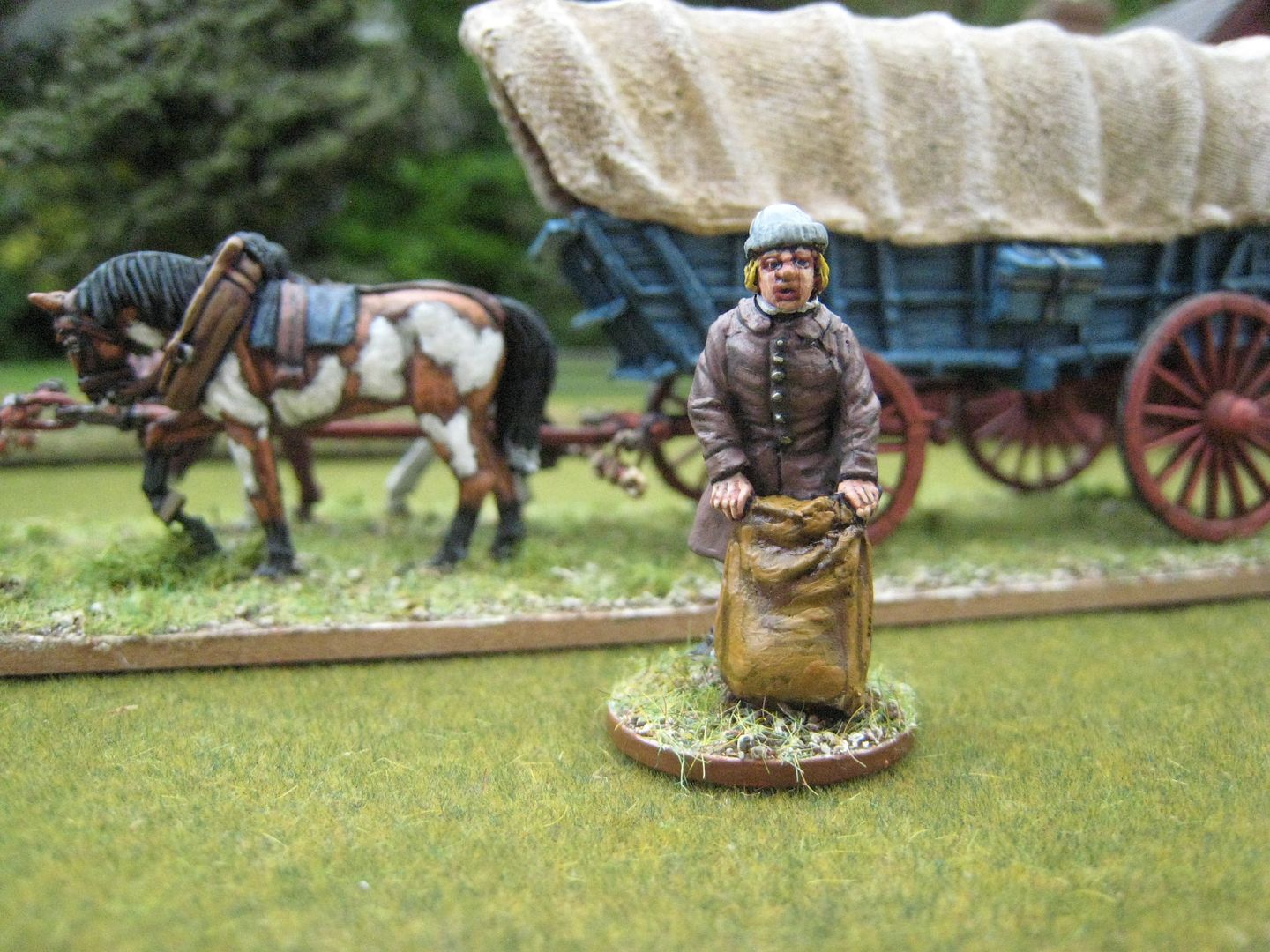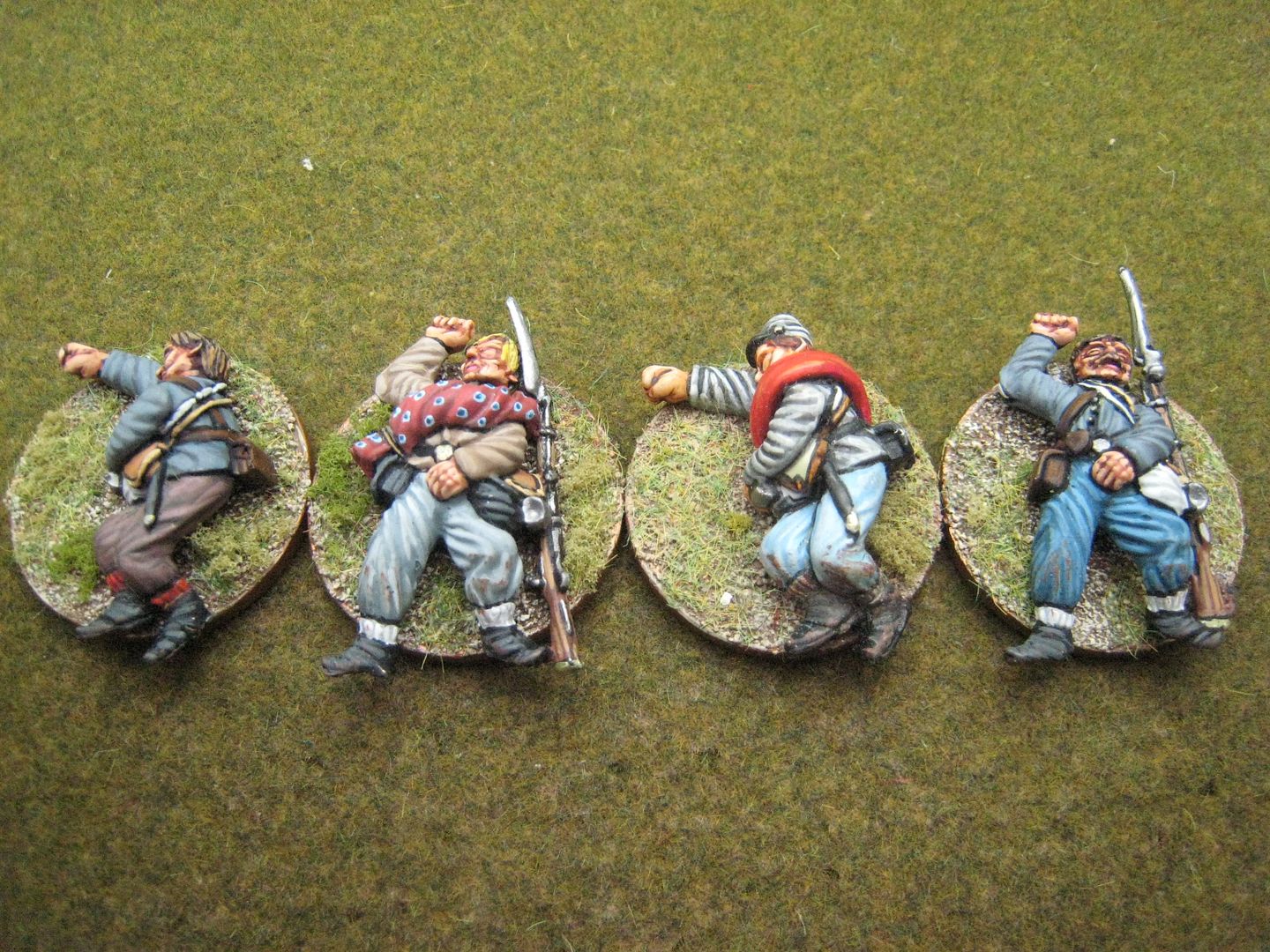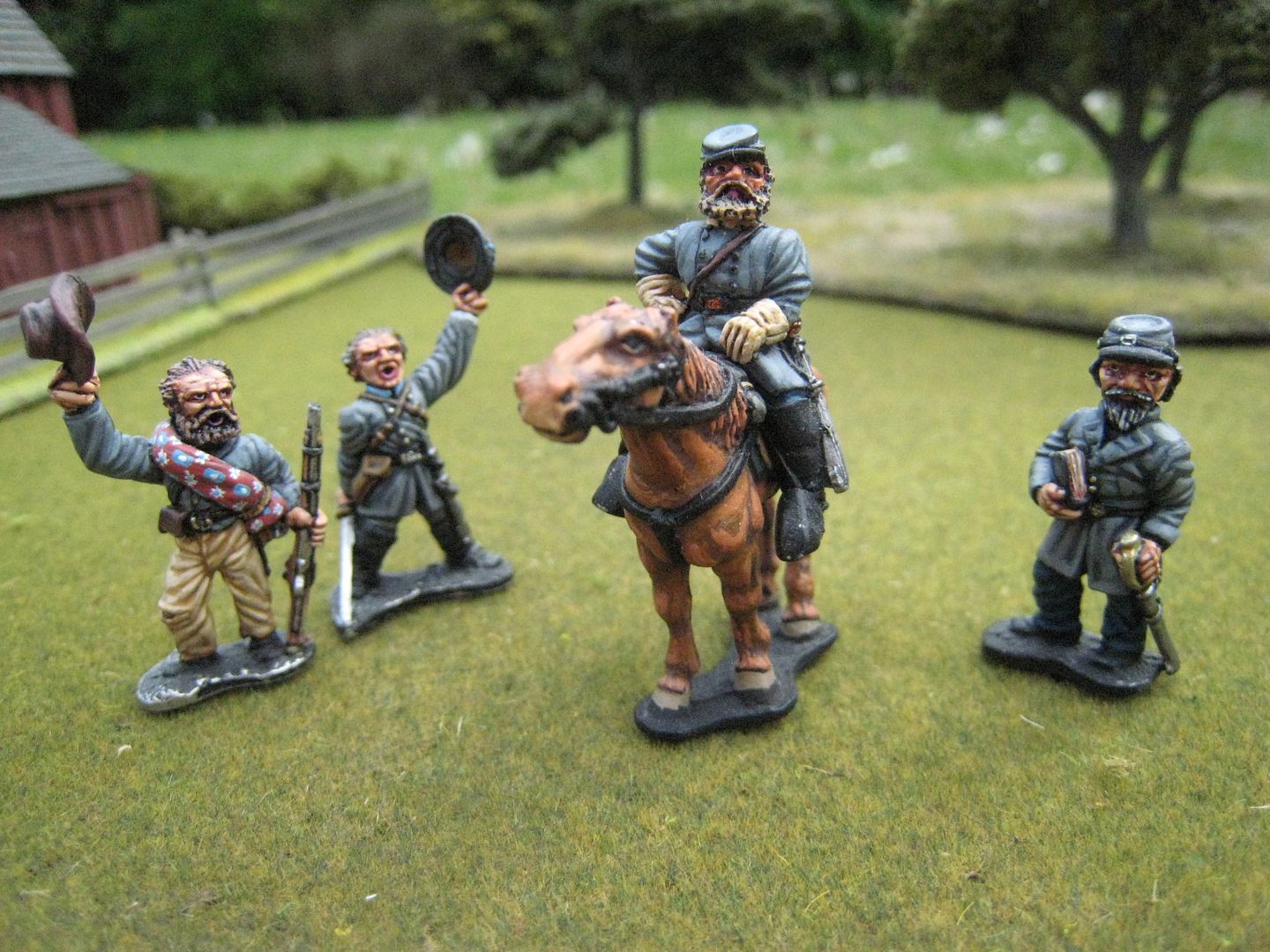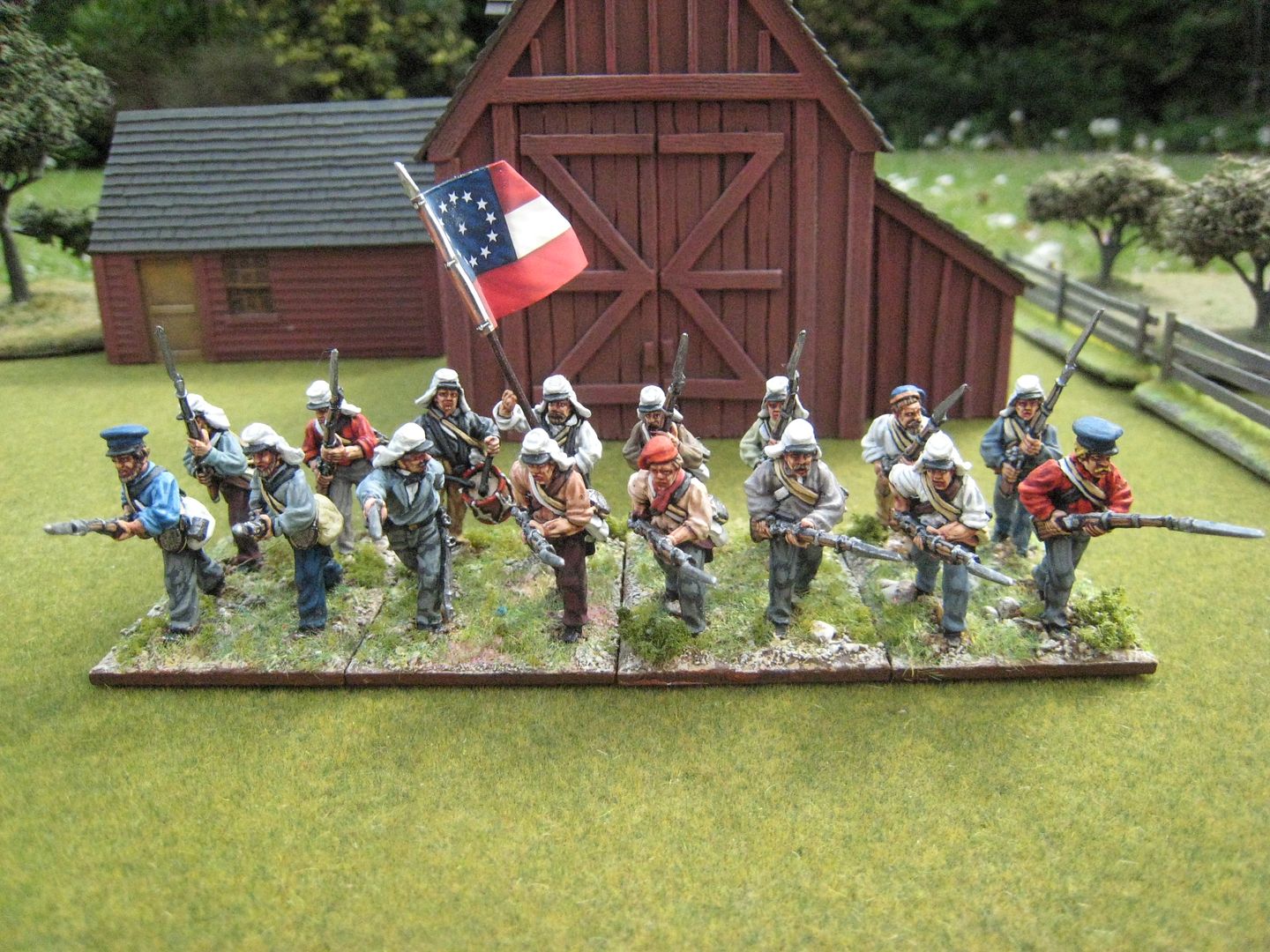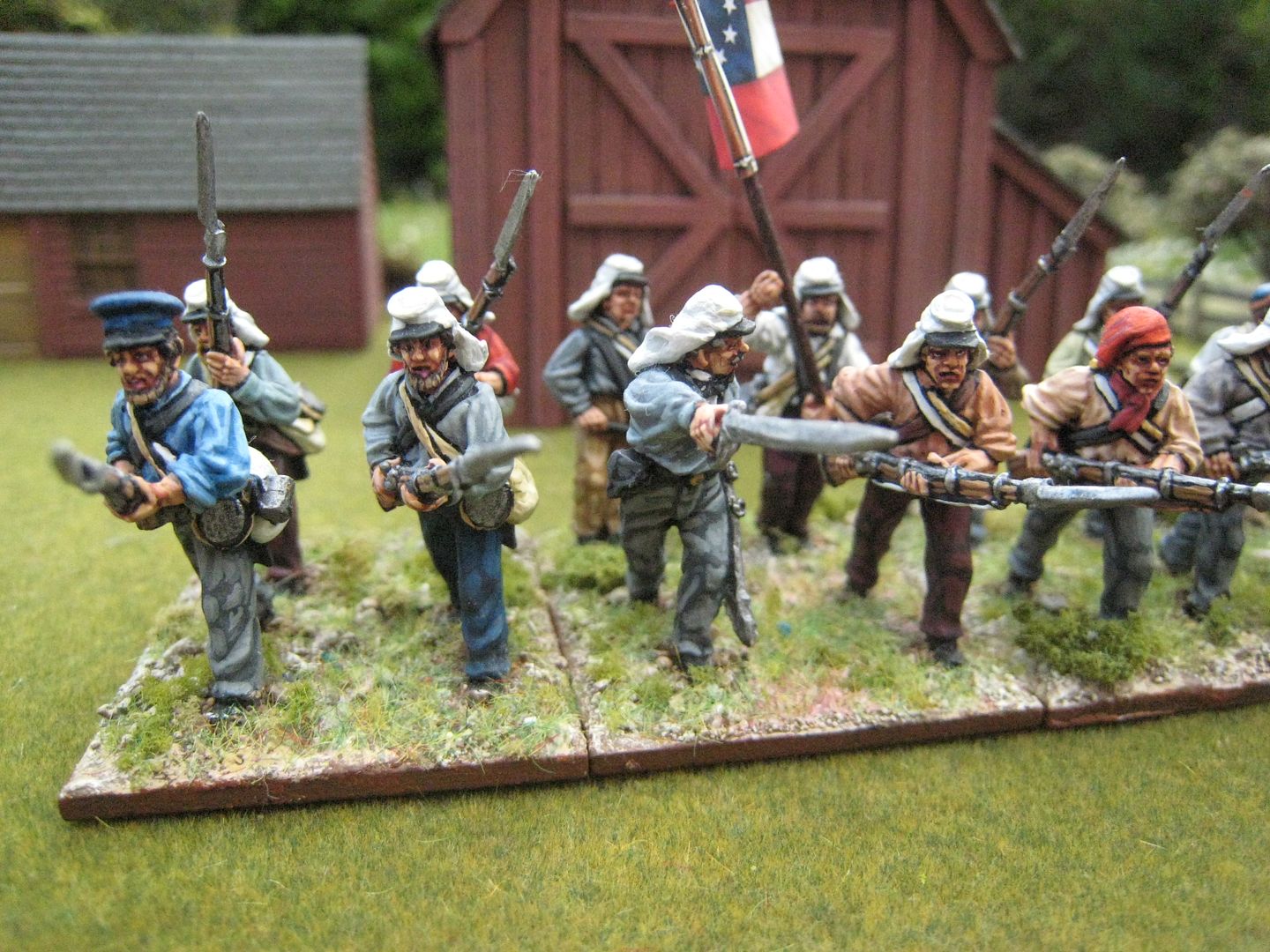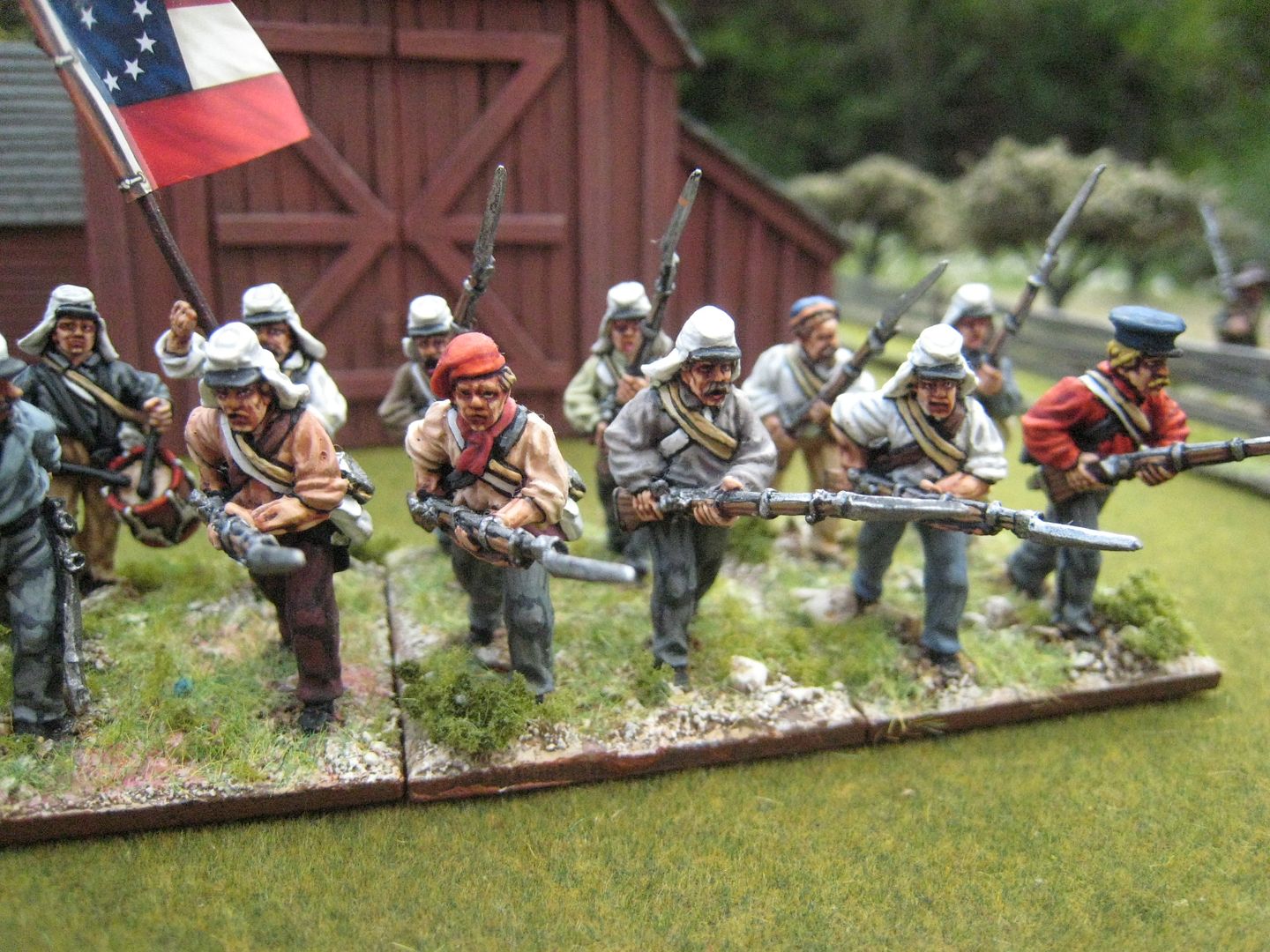So first of all, here are the figures in 1768 Royal Warrant; this is a post that has been some months in the making! These figures are the first Foundry British line I've painted for years. Painting the marching figures took some getting used to, as they have a lot of kit and fiddly straps which one doesn't have on "campaign" dress figures. That said, the firing line and charging figures were easy in comparison, as they don't have any kit other that the cartridge and bayonet belts. I did a small amount of remedial work on a few of the original figures, some of which were painted as far back as 2003, when I first started out on my AWI odyssey.
First, I needed an additional 6 figures for the 38th Foot. This is a useful battalion to have as it appears in the following scenarios: Bunker Hill (18 figures), Long Island (16), Fort Washington (12), Brandywine (16), Springfield (24). I already had the battalion based in sixes for Bunker Hill so I've added a 4th base of 6 figures to take it up to the 24 figures required for Springfield. That battle was fought in June 1780, and it's highly unlikely that at this stage the 38th was still in un-modified "full warrant" uniform. But I don't think it's worth painting a whole new unit in modified campaign dress just for that scenario.
Secondly, the 63rd Foot needed 10 more figures to take it up to 30 for the Hudson Forts scenario. The 63rd appears in the scenarios as follows: Bunker Hill (20), Long Island (16), Hudson Forts (30), Monmouth (16). The attack on Forts Clinton and Montgomery took place in October 1777, so the regiment was most likely in cut-down coats by this time, but the rest of the figures are in full dress. I painted up another base of 4 figures and then put the remaining figures on a base of 6 with an additional officer. I see I need to paint the outside edges of the bases on the older figures.
Thirdly, the 49th Foot needed another 4 charging figures to bring it up to 20 for Dorchester. This battalion's scenario appearances are: White Plains (16), Fort Washington (16), Dorchester (20), Brandywine (16) and Germantown (16). I reckon full dress is ok for the first three of these battles, and again I don't intend to paint the regiment again in campaign dress for the 1777 scenarios. Out of all these older units, I think this one shows the biggest change in style - the way I painted faces back in 2004 was rather embarrassing - oh, that horrid GW "Flesh Wash"!!
I should add that anyone looking for Fort Washington in any of the BG!/Caliver scenario books will be disappointed. It's on my scenario spread-sheet but the information on unit strengths came from material that AWI guru Brendan Morrissey posted on the General de Brigade website a few years ago. Looking at that spread-sheet I see that the end is in sight for British line infantry. Outside of further "reinforcement" work, I have the following left to do:
- 3rd Foot ("the Buffs"): two wings of 18 and 16 figures for Eutaw Springs (both of which I'll do in full dress, given that the 3rd was only recently "off the boat" at the time);
- 22nd Foot: Long Island (16) and Newport (20);
- 26th Foot: Hudson Forts (24) and Monmouth (16);
- 37th Foot: lots of battles;
- 54th Foot: Long Island (16);
- 64th Foot: lots of battles;
- 80th Foot: Petersburg and Gloucester Point (32).
Add a couple of skirmish units and that's it. So 32 line battalions done (plus 6 flank battalions) and 7 left to go. That's not bad. Maybe I should get the boys out for a parade over the summer.....Next on the list will be the 37th and 64th (Perry metals in campaign dress, I think) and the Buffs.
32 figures. Painted March to May 2016. All flags by GMB. All buildings in the background made to order by Tablescape.
